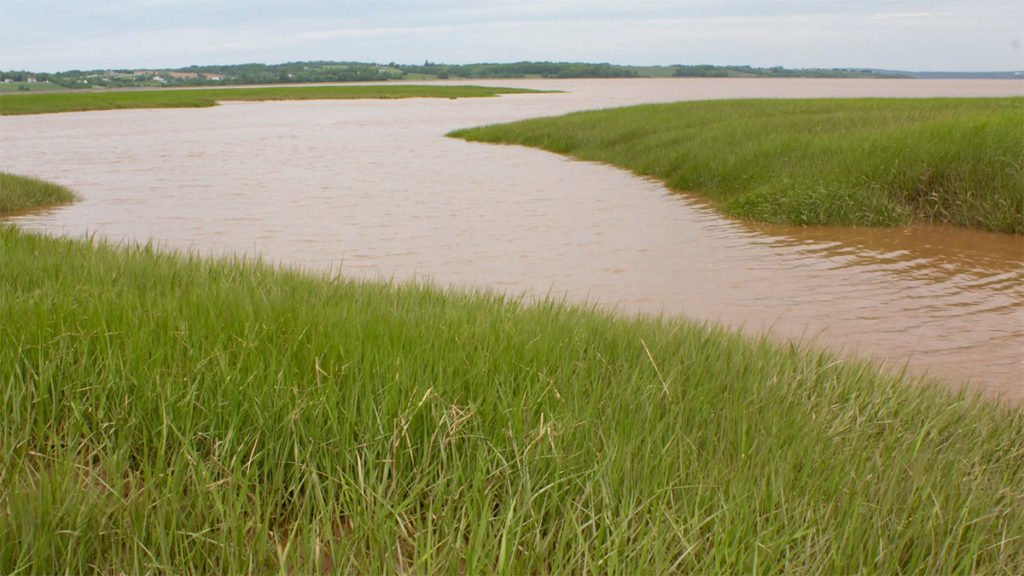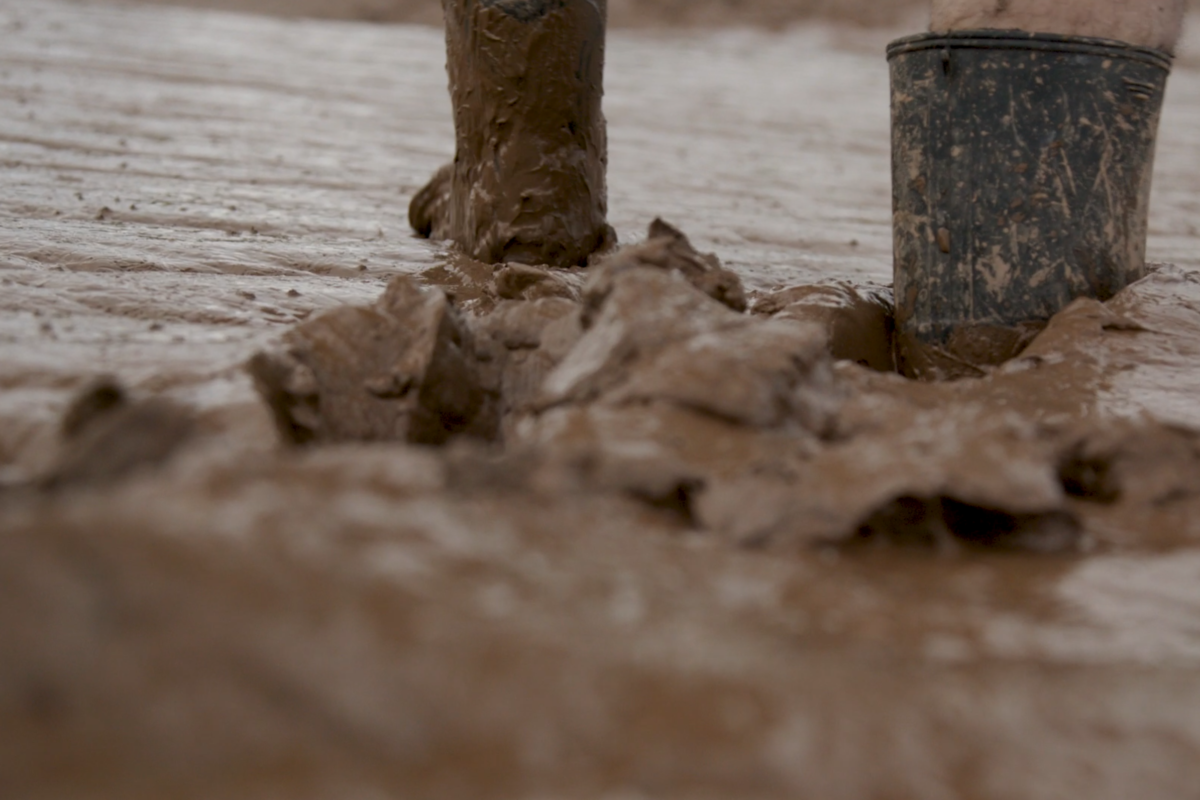
Fundy Marshlands
When Acadian settlers arrived in the Bay of Fundy region of present-day New Brunswick and Nova Scotia, the ancestral and unceded territory of the Mi’kmaq First Nation, they found salt marshes that had long been nourished twice daily by the bay’s tides, the largest in the world. The tides deposited sediment on which marsh grasses thrived, in the process supporting life, both human and non-human. But the Acadians wanted to farm as they had in France and so leaned upon techniques they brought with them to drain the marshes so as to create arable land. They did this through the construction of dykes (which held back the tides) and aboiteaux (which expelled water from the marshes); and following the mid-eighteenth century deportation of the Acadians, their English-speaking successors kept up this second nature landscape, dykelands that replaced the original salt marshes.




